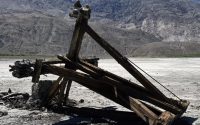Southern States Brace for Severe Weather After 3 Days of Deadly Storms
A relentless wave of stormy weather will again bring heavy rain, hail and the possibility of tornadoes — this time to parts of the South — on Thursday in the fourth consecutive day of severe weather across the United States.
The storms this week have killed at least four people from the Plains to the East Coast and have damaged and flooded communities in at least 10 states. Here’s what you need to know for Thursday:
-
Beginning in the afternoon, the nearly 200,000-square-mile region will face a variety of weather threats, including large hail, damaging winds — some potentially greater than 75 miles per hour — and the possibility of tornadoes.
-
More than 12 million people in parts of Alabama, Mississippi, Tennessee and Georgia were under a tornado watch Thursday morning.
-
After storms overnight Wednesday into Thursday morning, more than 200,000 customers across five states, including Georgia, Missouri, North Carolina, South Carolina and Tennessee were without power, according to PowerOutage.Us.
The storms in the Midwest and South on Wednesday killed at least three people and brought intense rain, winds and hail to some areas. The previous day, widespread storms tore through the Midwest and tornadoes ripped through Michigan.
One storm-related death was reported in Gaston County, N.C., just west of Charlotte, while another person was killed in Claiborne County, in northeast Tennessee, after a tree fell on a vehicle. A third person died Wednesday evening in Maury County, Tenn., after a large tornado was spotted near Spring Hill, about 35 miles south of Nashville.
Multiple cities across the region have also faced heavy rain that flooded roads and set off a wave of flood warnings and watches.
Earlier this week, over a dozen tornadoes ripped through the Midwest, including in Michigan, where storms damaged nearly 200 mobile homes and temporarily trapped dozens of FedEx workers inside a building. One tornado that was up to two miles wide ripped through a community in Barnsdall, Okla., a city about 40 miles northwest of Tulsa, killing one person.
This week, the atmosphere has created the right ingredients for tornadoes. That includes warm, moist air close to the ground and cool, dry air higher up, along with vertical wind sheer, which is the change in wind speed or direction.
Tornado outbreaks like those over the last few days have become more common in recent decades, and scientists have been studying why they have been coming in bunches.
Researchers are hesitant, however, to blame tornadoes’ clustering behavior on human-caused climate change.


